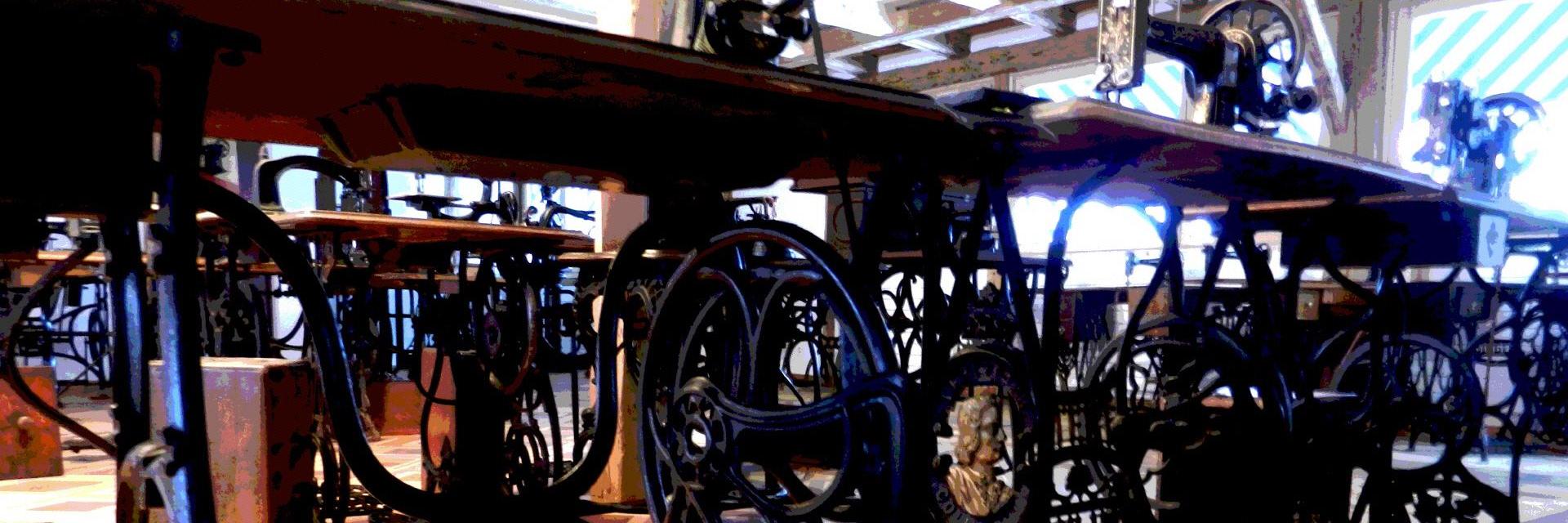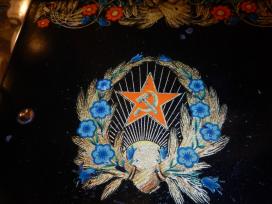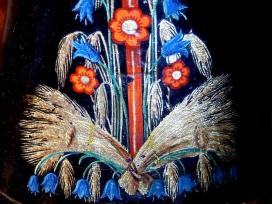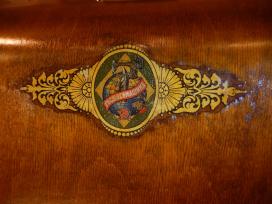Ein geschichtsträchtiger Neuzugang
Im Frühjahr 1897 wurde die russische Firma "The Singer Manufacturing Company" in St. Petersburg gegründet. Das Stammhaus, das "Singer Haus", am Nevsky Prospekt existiert noch heute. Es handelte sich formal um ein Unternehmen nach Russischem Recht, die Anteile wurden aber nicht frei gehandelt und befanden sich vor allem im Besitz weniger mit dem Singer-Konzern eng verbundener Personen.
Im Jahre 1900 erwarb das Unternehmen ein Grundstück in der Kleinstadt Podolsk, rund 40km südlich von Moskau, und errichtete dort eine Fabrik zur Herstellung von Nähmaschinen. Zwischen 1902 und 1915 wurden auf modernsten, aus den USA importierten Werkzeugmaschinen rund 3 Millionen Haushalts- und Spezial-Nähmaschinen für den russischen Markt gebaut. Dampfkessel und -maschinen für die Fabrik stammten aus Russland.
Ohne den Ausbruch des 1. Weltkrieges hätte die Gesamtproduktion für 1914 in Podolsk voraussichtlich 900.000 Maschinen überschritten und wäre damit derjenigen in den USA gleichwertig gewesen.
Während dem 1. Weltkrieg wurde das Singer-Werk in Podolsk zur Munitionsherstellung genutzt.
Nach dem 1. Weltkrieg und der Revolution von 1917 lief die Produktion nur langsam wieder an. Im November 1918 wurde die Singer-Werke in Podolsk und St. Petersburg offiziell enteignet und unter staatliche Kontrolle gestellt. Man begann danach die Produktion von Haushaltsnähmaschinen, Nachbauten der vorherigen Singer-Typen, die man nun als Gosshveymashina/ ("Staatsnähmaschine") vermarktete. Die Nähmaschinenwerke wurden folglich zu einem "sozialistische Musterbetrieb".
Natürlich erhielten die Maschinen ein neues Dekor, das an die sowjetischen Symbolsprache angepasst war: Hammer, Sichel, Stern und landwirtschaftliche Symbole. Auch das Emblem auf der Haube wurde ausgehend vom Original-Singer-Design nur leicht angepasst.
Diese Sowjet-Singer ist ein spannender und im Westen selten zu sehender Zeitzeuge und wurde dem Nähmaschinen-Museum von unserem russischen Freund Aliaksandr Lobach aus Moskau geschenkt.
Diese Maschine und mehr spannende Informationen zum Werk in Podolsk sind ab sofort im Nähmaschinen-Museum zu bestaunen.
Un objet imprégné d'histoire
Au printemps de 1897, l'entreprise russe "The Singer Manufacturing Company" a été fondée à Saint-Pétersbourg. Le siège principal, "Singer House", existe encore aujourd'hui au Nevsky Prospekt. Formellement, il s'agissait d'une société de droit russe, mais les actions n'étaient pas librement négociables et appartenaient principalement à des personnes étroitement liées au Groupe Singer.
En 1900, l'entreprise acquiert un terrain dans la petite ville de Podolsk, à environ 40 km au sud de Moscou, et y construit une usine de machines à coudre.
Entre 1902 et 1915, environ 3 millions de machines à coudre domestiques et spéciales pour le marché russe ont été construites sur des machines-outils importées des Etats-Unis. Les chaudières à vapeur et les moteurs à vapeur pour l'usine sont venus de Russie.
Sans le déclenchement de la Première Guerre mondiale, la production totale pour 1914 à Podolsk aurait probablement dépassé les 900 000 machines et aurait été équivalente à la production aux États-Unis.
Pendant la Première Guerre mondiale, l'usine Singer à Podolsk était utilisée pour la production de munitions.
Après la Première Guerre mondiale et la révolution de 1917, la production ne recommença que lentement. En novembre 1918, les uvres du chanteur à Podolsk et à Saint-Pétersbourg furent officiellement expropriées et placées sous le contrôle de l'Etat. La production de machines à coudre domestiques, répliques des anciens modèles Singer, qui étaient maintenant commercialisés sous le nom de Gosshveymashina (Machine à coudre d"état), a été lancée. Par conséquent, l"usine de machines à coudre est devenue une "entreprise modèle socialiste".
Bien s r, les machines ont reçu un nouveau décor adapté au langage symbolique soviétique : marteau, faucille, étoile et symboles agricoles. L'emblème sur le couvercle n'était que légèrement adapté du modèle original de Singer.
Ce "SINGER soviétique" est un témoin historique captivant, rarement vu en Occident, et a été présenté au musée des machines à coudre par notre ami russe Aliaksandr Lobach de Moscou.
Cette machine et d'autres informations captivantes sur l'usine de Podolsk peuvent maintenant être admirées au Musée des machines à coudre.
A history-charged new entrant
In the spring of 1897 the Russian company "The Singer Manufacturing Company" was founded in St. Petersburg. The main building, the "Singer House", at Nevsky Prospekt still exists today. Formally, it was a company under Russian law, but the shares were not freely traded and were mainly owned by persons closely associated with the Singer Group.
In 1900, the company acquired a plot of land in the small town of Podolsk, about 40 km south of Moscow, and built a sewing machine factory there.
Between 1902 and 1915, about 3 million household and special sewing machines for the Russian market were built on state-of-the-art machines imported from the USA. Steam boilers and steam engines for the factory came from Russia.
Without the outbreak of World War I, total production for 1914 in Podolsk would probably have exceeded 900,000 machines and would have been equivalent to the production in the USA.
During World War I the Singer factory in Podolsk was used for the production of munitions.
After the First World War and the revolution of 1917, production started only slowly again. In November 1918, the Singer works in Podolsk and St. Petersburg were officially expropriated and placed under state control. The production of domestic sewing machines, replicas of the previous Singer types, which were now marketed as Gosshveymashina ("state sewing machine"), was started. Consequently, the sewing machine factory became a "socialist model enterprise".
Of course, the machines were given a new décor adapted to the Soviet symbolic language: hammer, sickle, star and agricultural symbols. The emblem on the cover was also only slightly adapted from the original Singer design.
This "Soviet singer" is an exciting historical witness, rarely seen in the West, and was presented to the sewing machine museum by our Russian friend Aliaksandr Lobach from Moscow.
This machine and more exciting information about the Podolsk Factory can now be seen in the Sewing Machine Museum.




